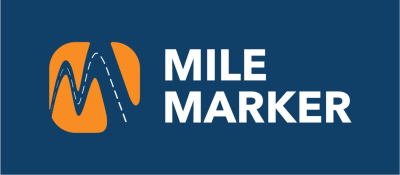Transparency has become the currency of credibility in advertising. As clients demand more outcomes-based accountability, agencies, media companies and online platforms promise more transparency. But how much of this is empty rhetoric and how much of it is an earnest commitment?
For those folks who think clients are bluffing, I would advise waking up to the idea that transparency isn’t just a buzzword; it’s a business imperative. This isn’t just about ethics; it’s also about effectiveness. In a world where every dollar counts, brands need partners who are as invested in their success as they are.
Larger holding companies must recognize that their opaque practices are no longer sustainable despite their doubling down on principal-based buying, which was a major driver in the Omnicom/IPG merger. If they fail to adapt, they risk losing the trust of clients and the loyalty of consumers. By demanding clarity and accountability, brands can drive better results, build stronger relationships and thrive in an increasingly competitive landscape.
When one surveys the advertising landscape, however, it is riddled with sinkholes of opacity.
AI is a shiny new black box
While the experimentation and adoption of AI will likely lead to great advancements and efficiencies in the long run, today it has potholes that can derail us from our path to growth. Something as revolutionary as AI will also encourage nefarious behavior from ill-intentioned opportunists.
Take Google’s Performance Max as one of the most glaring examples of black-box economics. Google says, “Performance Max helps you drive performance based on your specified conversion goals, delivering more conversions and value by optimizing performance in real time and across channels using Smart Bidding.”
The delivery of that lofty promise, however, is lacking.
PMax – and Meta is also prone to this – doesn’t disclose or provide insight into which algorithm is prioritized and why (i.e., clicks vs. higher-quality prospects) and how to effectively adjust bidding to cost-effectively achieve a client’s true business objective. This is why you need the human layer to ensure performance is truly validated and you’re able to drive incremental growth and scale.
Brand marketers on PMax don’t know how much is spent and where. Yes, you’ll get some good premium ad placements on prime Google channels, but far too much of the budget is going to the far reaches of Google’s network where much of the inventory is not where you would want the ad unit to show up. In the name of optimal cost-per-acquisition, PMax is flinging many of your investments into sketchy, murky, long-tail places. The democratization of media planning is not a good thing when all too many platforms are bundling and serving crappy impressions and stuffing costs.
Virtually all of these AI and black-box platforms are designed for DTC brands specifically. The inherent requirement to have direct connections to an ecommerce platform or CRM system will negatively affect campaigns that are designed for awareness or incrementality.
AI in media is blurring the lines of where your media is being placed. Brand safety, transparency and visibility controls are being removed.
Lack of reporting transparency cannot stand
Are you getting true costs in your report by line item, by placement, by audience, by tactic? How can you optimize a campaign without a true understanding of the cost that goes into each line item?
All too often, publishers give us contracted rates, but when you unpack the delivery you find the domains that the impressions served across are undesirable/low premium, or the geo delivery overweighs to irrelevant locations. For example, a buy delivers 15% to Anchorage where the brand has no footprint. Human intervention should monitor pacing or else you could unload all of your impressions at once.
We should all be operating as open books when it comes to rate transparency. It’s fine to use Nielsen and other services as research but agencies should go the extra mile to achieve full transparency for their clients by building proprietary KPI measurement processes based on individual client goals.
In creating these custom dashboards, agencies have the opportunity to contribute to client education, which would have a positive effect on client-agency partnership trust and effectiveness, writ large. By demonstrating value and ROAS, this healthier dynamic could empower client marketers to keep procurement folks at bay with their “lowest rate possible” demands.
Full transparency should be table stakes
Brands have all the power. If they have the will, then there is a clear way to fulfill transparency. Regular audits can uncover inefficiencies and ensure that budgets are being spent effectively. Clients should only choose partners who are as committed to establishing and upholding full transparency as they are.
With this level of uncompromising accountability, campaigns can be built upon actionable insights and not on preferred vendor relationships.
The question is no longer whether transparency matters but rather, “What are you doing to ensure it?” For agencies, it’s a call to rise above outdated practices. For brands, it’s a mandate to demand better. Together, we can create a more transparent, effective and equitable advertising ecosystem.
“Data-Driven Thinking” is written by members of the media community and contains fresh ideas on the digital revolution in media.
Follow Mile Marker and AdExchanger on LinkedIn.














